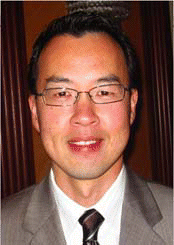MARCO ISLAND, FL-In performing blepharoplasty, the type of suture materials used by the surgeon may make a difference in outcome, researchers suggested at the first combined sections meeting of the Triological Society.
Explore This Issue
April 2007Doctors scrutinized the complication rates, the need for revision, and other factors among more than 800 patients who were treated by a single surgeon during a five-year period.
During the preoperative evaluation, patients were assigned one of four established techniques for incision closure based on the senior author’s experience, reported Arjun Joshi, MD, resident in the division of otolaryngology-head and neck surgery at The George Washington University in Washington, DC.
Dr. Joshi said that the study was undertaken because despite the prevalence of the surgery-performed for cosmetic reasons or to improve a patient’s field of vision-there is a paucity of information regarding suture techniques not only in blepharoplasty, but in other aesthetic facial surgeries.
He noted that upper eyelid blepharoplasty is one of the most common procedures performed for facial rejuvenation. It is a very successful treatment when patients are carefully chosen. The risks in the procedure are fairly low, he said, but asymmetry and scarring can occur.
 This is a very large study of different materials in performing blepharoplasty. There have been other studies of these materials in other parts of the body but I’m not aware of other studies that have been performed that specifically look at blepharoplasty.
This is a very large study of different materials in performing blepharoplasty. There have been other studies of these materials in other parts of the body but I’m not aware of other studies that have been performed that specifically look at blepharoplasty.
-John Rhee, MD
Results of the Study
From 2001 to 2005, Dr. Joshi said that 866 patients underwent blepharoplasty. Patients who had skin resurfacing procedures such as lasers or peels were excluded from the study.
He said 198 of the surgeries were closed with 5-0 subcuticular polyprolene; 45 patients were closed with 5-0 running, locking polyprolene; 177 patients were closed with 6-0 running plain gut; and 466 patients were closed with 6-0 fast-absorbing gut, 2-0 simple interrupted 5-0 polyprolene sutures at the lateral ends of the incisions. All the patients underwent evaluation of the procedure at one, two, four, and six weeks, and then they were surveyed after three months.
Dr. Joshi said that among those whose blepharoplasty was closed with 5-0 subcuticular polyprolene, there were 5 (2.5%) who developed milia-the white bumps that often occur in healing skin, which are usually temporary; 11 patients (5.5%) had standing cone deformities that required revision; none of the patients had scarring; 4 patients (2%) had erythema; none of the patients had suture marks; and minor hematoma occurred in 2 patients (1%).
Leave a Reply